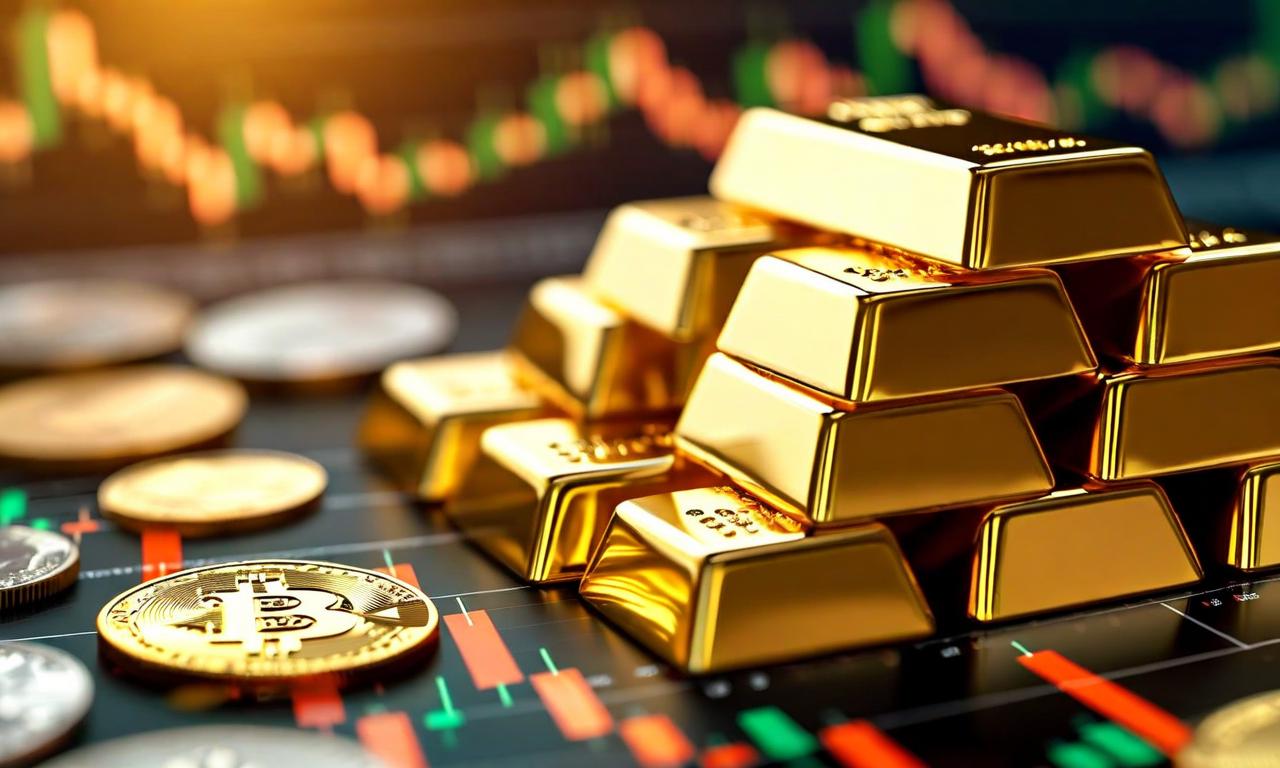India's Household Gold Wealth Soars to $3.8 Trillion Amid Price Rally
Indian households' gold holdings have reached an estimated $3.8 trillion following a 62% price rally, now valued at nearly 89% of the country's GDP. Households collectively hold about 34,600 tonnes of gold, 3.1 times larger than equity holdings. Gold consumption in India has increased to $68 billion, with a shift towards retail investment. Global gold prices hit record highs above $4,000 per ounce, while domestic prices reached ₹1.27 lakh per 10 grams. Experts advise caution at current price levels despite long-term bullish views.

*this image is generated using AI for illustrative purposes only.
India's households have amassed an estimated $3.8 trillion in gold wealth following a significant 62% price rally, according to recent data. This surge in gold value has positioned Indian households' gold holdings at nearly 89% of the country's GDP, underscoring the metal's importance in the nation's economy.
Key Highlights
- India's households collectively hold approximately 34,600 tonnes of gold.
- Gold holdings are now 3.1 times larger than equity holdings, which stand at $1,185 billion.
- India accounts for 26% of global gold demand.
Gold Consumption and Demand
Gold consumption in India has seen a substantial increase, reaching $68 billion on a four-quarter trailing basis, up from $44 billion previously. The composition of gold demand in India has also evolved:
| Demand Category | Current Share | Previous Share (5 years ago) |
|---|---|---|
| Jewelry | 68% | 76.1% |
| Retail Investment | 32% | 23.9% |
This shift indicates a growing trend towards gold as an investment instrument, with retail investment in bars and coins gaining popularity.
Global and Domestic Price Trends
The gold market has experienced significant price movements:
- Global gold prices hit record highs above $4,000 per ounce.
- Domestic prices in India reached ₹1.27 lakh per 10 grams.
Factors Driving the Gold Surge
Several factors have contributed to the recent gold price rally:
- Safe-haven demand amid global uncertainty
- Federal Reserve's rate easing policies
- Dollar weakness
- Increased central bank buying
Expert Opinions on Gold Market
Manish Chokhani, Director of Enam Holdings Ltd, believes the bull market in gold remains structurally sound, driven by aggressive central bank purchases and rising geopolitical uncertainty. However, he advises caution at current price levels, stating he would 'not recommend gold now' as it trades above $4,000 globally.
Chokhani expects consolidation but maintains a long-term bullish view, noting that 'central banks are buying gold and silver like there's no tomorrow' as they diversify reserves away from currencies. He observed generational differences in investment preferences, with people over 50 buying gold while those under 50 prefer bitcoin.
Gold has surged over 50% this year, reaching a record Rs 1,22,169 per 10 grams, marking a 60.10% increase. The rally has been supported by safe-haven demand amid geopolitical tensions and expectations of US interest rate cuts. Gold-backed ETFs experienced record monthly inflows in September following Fed rate cuts.
Market veteran Ramesh Damani expressed preference for equities over gold, citing gold's 3% long-term returns while remaining bullish on Indian equity markets.
Impact on Household Savings
Despite the wealth effect from rising gold values, Morgan Stanley notes a shift in household savings patterns:
- Equity share in household savings has risen to 15.1%
- Deposit share has fallen to 35%
This trend suggests a gradual diversification of Indian household investments, with an increasing appetite for financial assets alongside traditional gold holdings.
Conclusion
The substantial increase in India's household gold wealth to $3.8 trillion marks a significant economic phenomenon. While gold continues to play a crucial role in Indian households' wealth portfolio, the gradual shift towards other financial assets indicates an evolving investment landscape in the country. As global and domestic factors continue to influence gold prices, it remains to be seen how this will shape India's economic dynamics and investment patterns in the long term. Despite the current bullish outlook, experts advise caution at current price levels, highlighting the importance of diversified investment strategies.





























